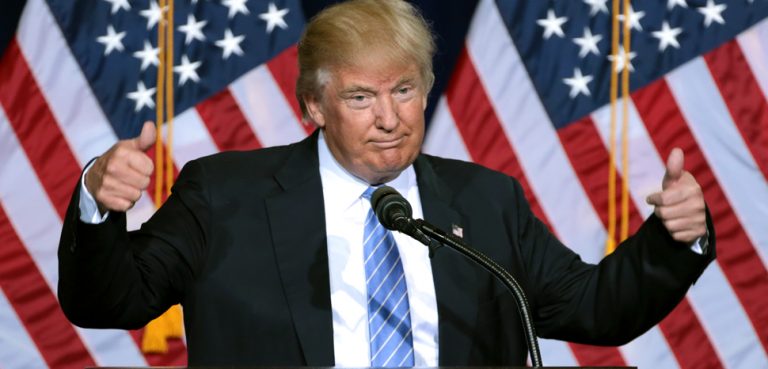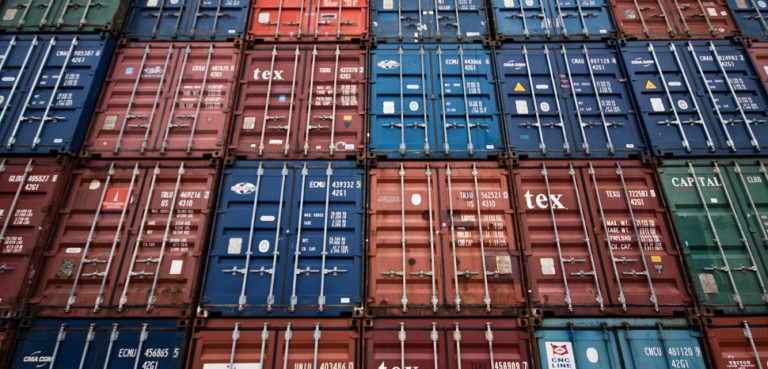
China remains a critical market for multinational firms. It is the world’s second-largest economy and the largest manufacturing and trading state. China is also among the world’s greatest beneficiaries of foreign direct investment (FDI). As of the mid-2010s, approximately a third of China’s GDP could be traced to foreign-invested enterprises (FIEs), their supply chains, and the consumer spending of related employees. However, shifting policies, slower economic growth, changing consumer behavior, and geopolitical tensions are now prompting a rethink of China strategy among many foreign companies.
A Shifting Policy Environment Elbows Out Foreign Firms
Foreign firms have always regarded China’s policy environment as challenging. China reserves a substantial portion of its economy for the state or state-owned enterprises (SOEs) through a Negative List for Market Access. Beijing further restricts the access of foreign companies through its Special Administrative Measures (Negative List) for Foreign Investment Access, while the financial sector has its own additional restrictions. And while the number of sectors from which foreign firms are excluded has been substantially reduced over time, China is still among the most restrictive of the world’s largest economies.
China’s industrial policies increasingly aim to shift the balance in favor of Chinese firms. The “Made in China 2025” (MIC25) program, announced in 2015, includes targets for Chinese firms to displace foreign firms in domestic and international markets across 10 key technology areas. Further support in these areas is embedded in China’s 14th Five-Year Plan (2021-2025).
Together, these policies enhance longstanding industrial supports, including subsidies for Chinese companies in R&D, training, specialized industrial parks, foreign asset acquisitions, as well as preferential access to finance and government procurement. The policies reinforce signals to the banking sector, investors, entrepreneurs, and others as to which sectors they should support.
Meanwhile, Beijing continues to force foreign firms to share technology in exchange for market access. The lack of intellectual products (IP) protection in China has cost foreign companies hundreds of billions of dollars in lost revenues, and Chinese theft of IP may have cost trillions more.
Stronger local capabilities and the increasing assertiveness of these policies have produced growing concern among foreign investors. Ultimately, foreign multinationals trying to do business in China must ask nowadays the difficult question of whether China is still investable in the long term, as geopolitics and economic pressures further compound the dilemma. Reasonably, all Western strategic investments should pass through a critical analysis of possible ‘Cold War 2’ consequences. This means that China often may turn out a grey zone and the strategy of ‘in-China-for China’ may not be workable even from the most primary business perspective. Practical examples in this regard include Mitsubishi’s withdrawal from the China market and the systematic pressuring of Tesla by electric vehicles manufactured by Chinese companies supported by Beijing.
National Security Restrictions Looming Ever Larger
While many aspects of China’s Cybersecurity Law, Personal Information Protection Law, and Data Security Law are similar to those found in other countries, limits on cross-border data transfers and related requirements on source codes, rights for government access, and for companies to keep data within servers located in China have been described by some as paradigm-shifting and unprecedented. China’s expansion of its National Security Law and raids on foreign consulting companies have raised fears that even normal business analysis could be subject to arbitrary enforcement. The Anti-Foreign Sanctions Law, passed in June 2021 just a week after the Biden administration banned investment in 59 Chinese companies for aiding China’s military and security forces, allows China to seize assets from companies that comply with foreign sanctions on China and to take action against senior managers of such firms – and their family members.
China also requires firms over a certain size to have Chinese Communist Party cells. By 2018, an estimated 73% of private companies in China had set up such cells, including more than 100,000 such cells in foreign-invested companies. The extension of control by China’s party-state over all aspects of Chinese society has become a hallmark of the Xi Jinping era. In 2016, President Xi called for the Party to integrate Party leadership “into all aspects of corporate governance.” This includes the private economy, impacting both domestic and foreign companies.
China’s Economic Indicators Turn Negative
Mounting policy concerns are being compounded by a negative turn in China’s economic indicators. The size and growth of the Chinese market have long been the main attraction for foreign companies. However, slower economic growth, a greying demographic, and an imploding property sector have changed the “China story.” China’s 14th Five-Year Plan (2021-2025) claimed that the goals of overcoming abject poverty and establishing a middle-income standard of living had finally been achieved, relegating the pursuit of headline economic growth in favor of nurturing key technologies, self-sufficiency, and national security. The shift is quite significant in terms of overall growth, with many analysts expecting rates to fall from the 7% averages of previous years to 3-4% annually.
The competitive environment has also changed. While foreign companies were once technology and quality leaders in China, this is often no longer the case. China has become an innovation leader in artificial intelligence, high-speed rail, e-commerce, and e-marketing. Chinese companies have become a global force in electric vehicles, consumer electronics, telecommunications equipment, solar panels, and many other industries, competing not only in the low end but increasingly in premium segments and industries as well. Localization and Chinese cultural branding are becoming more important, particularly to younger Chinese, and Chinese consumers have taken to e-marketing and e-commerce to a greater extent than anywhere else in the world.
Slower domestic growth and increased competitive pressures have made the China investment story less compelling, and this is reflected in FDI numbers that have been in constant decline since Feb 2022, with investment outflows surpassing inflows as of May 2023.
Between 1996 and 2010, foreign companies accounted for more than 50% of China’s exports by value. This share has been in structural decline but remains significant at just below one third at present. In addition, foreign companies enjoy profit margins about 15% higher than their Chinese counterparts, implying greater capital efficiency. For example, in 2022, foreign-invested enterprises (FIEs) accounted for 20.7% of industrial enterprises’ business revenue but 23.8% of profits. That compares to 2005 when FIEs accounted for 31.6% of revenue but 28% of profits. From a fiscal standpoint, FIEs are also very important, accounting for 17.6% of national tax revenue in 2022. Even so, China’s FDI outflows are gradually surpassing its inflows.
There is also the matter of currency controls, which falls under the prerogative of the State Administration of Foreign Exchange (SAFE). SAFE divides foreign currency transactions into those under the current account and those under the capital account. Capital account transactions are related to foreign direct investment (i.e., changes in a company’s registered capital), the purchase and sale of equity or debt securities, and trade credit or loans. These need approval from SAFE, while current account transactions can be made directly through banks.
SAFE reserves the right to regulate the percentage of foreign currency a company may have as part of its capital account. These fluctuate according to China’s Balance of Payments, which refers to transactions between the entities and individuals of two countries.
Firewall between Trade and Geopolitics Crumbles
Foreign companies in China are finding themselves caught up in global geopolitics to a greater extent than ever before. Several Korean companies found themselves frozen out of the Chinese market after the deployment of the US Terminal High-Altitude Area Defense, or THAAD, anti-missile system in 2017. Lotte, which once had extensive operations across China, has essentially exited the market. Samsung Electronics, once one of the largest investors in China, closed its last smartphone factory in China in 2019 and its last personal computer and television factories in 2020. In a classic case of Beijing’s selective deployment of non-tariff barriers in service of its foreign policy, Norwegian firms and products were barred from China after the 2010 Nobel Peace Prize was awarded to dissident author Liu Xiaobo. It took six years and a written apology from Oslo to normalize trade relations. China-Australia relations nosedived in 2020 after Canberra criticized China for refusing to share more information on the origins of COVID-19. H&M had retail leases and online access blocked after the company said it would not source cotton from Xinjiang. These individual cases illustrate the findings of an Australian Strategic Policy Institute (ASPI) report that uncovered 152 instances of China employing what ASPI called “coercive diplomacy” against foreign companies or governments between the years of 2010 and 2020, an era that largely corresponds to Xi’s ascendancy.
Despite press commentary to the contrary, it was actually China that initiated the “decoupling” around 2005. China’s “dual circulation” strategy – Xi’s formalization of longstanding trade dogma – aims to reduce China’s dependence on the rest of the world while making the rest of the world more dependent on China. The strategy appears to have succeeded: McKinsey reported that the rest of the world’s exposure to China tripled from 2000 to 2017, while China’s exposure to the rest of the world decreased by a quarter. China’s Belt and Road Initiative (BRI) is designed to “decouple” BRI countries from the West and Western institutions and couple them with China. The China International Payments System (CIPS), Beidou geolocation system, and “Digital Silk Road” are designed to do the same. It was the MIC25 program that galvanized a bipartisan and bicameral answer from US Congress, elevating an economic conflict that coalesced in kind around the Trump, and later Biden, administrations’ policy responses.
These growing geopolitical tensions, and China’s increased willingness to sanction companies officially or unofficially for acts or statements made anywhere in the world, further complicate matters for foreign firms. Together they dramatically increase the chances that companies will be caught in the tangle of public sentiment and political interests between China and their home countries.
Navigating a Complex Business Environment
China therefore represents an increasingly complex market for foreign firms. While restrictions on foreign investment have long been a fact of life in China, laws and regulations on data and cybersecurity, national security, sanctions, and Communist Party cells are new, have been expanded, or are being enforced to an unprecedented extent. China has always had aggressive industrial policies, but the scope, level of support, and attempts to displace foreign firms through massive state support are unprecedented in scale and scope.
Coupled with a Five-Year Plan that emphasizes self-sufficiency over headline economic growth, the rapidly developing capabilities of Chinese firms, and the emergence of a consumer market that increasingly favors local companies and brands, these factors represent a challenge of enormous proportions for foreign firms. This is particularly true as China’s economy slows, the market opportunity for some firms diminishes, and the potential to get caught up in geopolitical tensions grows.
While some foreign firms have exited the China market, most have stayed. In 2024, European companies were most concerned with China’s slowing economy, with a historically low percentage looking to expand in China. On the other hand, East-West tensions represented the leading concern among US companies operating in China. The situation is challenging, but China remains the world’s second-largest economy, contributes to a substantial portion of global growth, and is home to competitors and customers that may change the nature of industries globally, giving companies a strategic reason to face them in China.
But for firms that continue to invest in China, it has become clear that they must think a lot harder about critical questions: Is their sector open or closed to FDI? Is it of strategic importance to China? Does Beijing’s industrial policy target it? Are they a known leader by productive capability? Are they able and willing to transfer technology and expertise? Are they willing to support China’s key priorities? The nationality of the company matters. As a result, in addition to their traditional market, competitor, and consumer analysis, foreign companies now must assess the changing policy, business, economic, and geopolitical environment in China. They must ask how much of a role China plays in their global strategies. And ultimately, they must ask themselves what their appetite is for competing – and perhaps failing – in one of the world’s most important and challenging economies.



